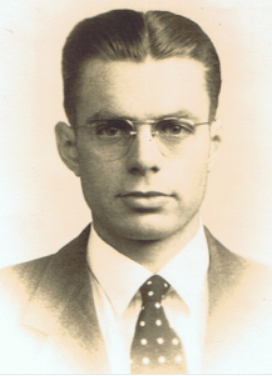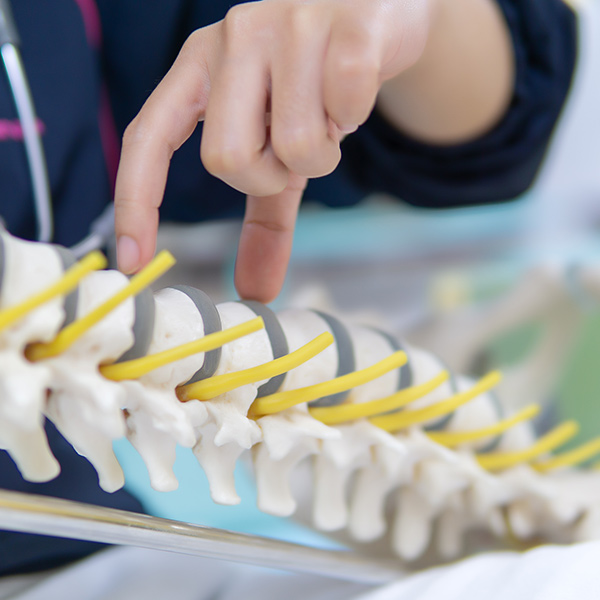In His Own Words

When I Graduated From Medical School
“When I graduated from medical school, the guest speaker stated, “We have taught you what we know. It may well be that half of what we have taught you is not so. But we don’t know which half is so and which half is not so”. I learned so much in medical school that I was proud of my acclamation of knowledge. Was this speaker for real or simply a learned clinician acting out a false humility?
As I marched down the aisle of graduation from medical school, I was proud of my increased amount of knowledge I had gained. I was especially proud of knowing about medications that were known to relieve headaches. Surely among these medications for headaches was an answer for my mother’s headaches. I thought that now I have a solution to the lonely hours I spent as a preschooler while my mother was in bed in a dark room. I was all alone wondering how I could help my mother.
I specialty trained in neurology and psychiatry and had a flourishing practice in these specialties. After fifteen years of practice, I began to wonder why we had so few answers that worked. There was shock treatment for severely ill patients. I gave over 70,000 of these. There were tranquilizers emerging in the late 50’s and early 60’s. I used these by the bushels on my mental patients. The efficiency was low and the side effects of tranquilizers were astoundingly frightening. One tranquilizer in an ad in a medical journal claimed less side effects than another tranquilizer and yet it took one-half page of fine print to list the side effects of this proposed better tranquilizer. I had six therapists ( psychologists, social workers and sociologists) seeing my patients in individual and group therapy. The level of results in schizophrenia and manic-depressives was especially discouraging.
In the early 60’s, behaviorism came to the rescue in helping some neurotics in the ability to train out their symptoms. What about psychosis for which behaviorism had little help? Electric shock proved to have some temporary help. Tranquilizers were of minor help and the side effects were appalling. Obviously, our system was often even making our patients develop physician-induced illnesses. This was particularly troubling with a five-fold increase in maturity onset diabetes mellitus when using tranquilizers. Were there answers not learned in residency training that we were ignoring?
In my third year of medical school in 1949, while attending a small group session at Los Angeles County General Hospital, an allergist made the observation about a patient with anxiety whom he fasted for five days during which her anxiety symptoms left. When he exposed her to a test meal of one of her frequently eaten foods, her anxiety returned. He asked, what is the diagnosis? I was studying medicine with the expressed purpose of becoming a psychiatrist. I spoke up, giving the diagnosis of anxiety-neurosis. He said,”No. This is a food allergy”. The rumor was that this allergist had ideas that most of my instructors did not agree with. I dismissed his diagnosis until twenty years later (1969).
In my second year of psychiatric residency training, I read the book Neurosis by Walter Alvarez, M.D. In this book, he describes headaches and many symptoms of neurosis and psychosis occurring during deliberate food testing. I could not believe this. I thought Dr. Alvarez made a fool of himself. After all, he was an internist, not a psychiatrist and why was he dabbling into psychiatry. I dismissed his observations and didn’t look at this book again for 16 years. I was wrong for ignoring him. I learned behaviorism from Joseph Wolpe, M.D. He and I shared the opinion that schizophrenia must be organic in origin. In 1965, he sent me an article by Theron G. Randolph, M.D. Magnetic Health Quarterly Vol. V, Third Quarter, 1999 (2002 Revision) Page 17 Amazingly, Dr. Randolph described many mental and physical symptoms as disappearing on a five day fast and re-emerging during food tests on deliberate food tests of single foods. I set this article aside as impossible.
In 1969
In 1969, I was a consultant to a boarding school of some 100 socially and educationally disordered adolescents. I was responsible for a neurological and psychiatric examination on each student. One-third either were or had been psychotic. Saul Klotz, M.D. Internist-Allergist was responsible for their physical needs. He proposed to me that we do a double-blind study to determine the extent to which food allergies and non-allergic hypersensitive reactions related to their numerous symptoms. Together we did a double-blind study using food extracts. The results were overwhelmingly positive. I now had to consider how wrong I had been by ignoring the evidence that had come to me through the years concerning maladaptive reactions to foods and symptom-production. I was invited by a private psychiatric hospital to set up a study to determine the causes of schizophrenia. Based on the double-blind study of Saul Klotz, I initiated a study of the relation of foods to symptoms in my mental patients. To this, we added a nutritional survey and a survey for infectious agents. This research followed the advice of Theron G. Randolph, M.D. of a five day fast preceding food testing of single foods. This study resulted in the publication of two books, Brain Allergies and Victory Over Diabetes. From 1970 through 1990, I tested thousands of both psychiatric and non-psychiatric patients with a five day fast followed by deliberate food testing. The patients were monitored for pH changes and blood sugar changes. Viruses, especially Epstein-Barr, cytomegalovirus and human herpes virus VI emerged as being consistently in our mental patients and those with more serious physical symptoms. All patients maladaptively reacting to foods had some degree of carbohydrate disorder. Maturity-onset diabetes emerged as the end result of prolonged reactions of food addiction. The brain/gut relationship was obvious.

Therefore, during my testing I observed many minor to major gut reactions to foods. In 1973, a schizophrenic young man entered my research program. His father, president of a bank in Houston, was so impressed by his son’s recovery that he proposed a $6,000,000 research program using my method of treatment. This money was to be provided to the medical school at Galveston over a four year period. I was invited to Galveston to do the project. However, I was satisfied with my current research program and decided not to move to Galveston for it. I went to Galveston and explained my system of diagnosis and treatment of psychotics. The medical school accepted the $6,000,000.
To my amazement, they didn’t do anything I had outlined. Instead, they diverted the money to other projects but did do a Rossette test on a few schizophrenics. The results are published in the book, The Biology of the Schizophrenic Process edited by S. Wolfe. The conclusions from the Rossette test is that schizophrenia is either an immunologic reaction or a viral infection since both of these look the same on the Rossette test. This did confirm my findings but disappointingly, did not provide a statistical value of my treatment.
It is a strange phenomena that there is inherently a resistance for doctors to recognize the relationship between foods and the development of both acute symptoms and chronic degenerative diseases. Some say they are waiting for more evidence such as more double-blind studies or the resolution of conflicting data. It appears to me that this waiting for evidence which really is already here in abundance, is not really the central problem.
The Addition of Magnetic Therapy To My Ecology & Infection Program Became a Natural
The problem is that it is hard for doctors to change their behavior once they have learned a comfortable set of routines. Doctors, by and large, have obsessive-compulsive personalities. This serves them well in their massive amount of learning that they need to do during medical school and residency training, however, it also serves as a handicap in making changes. The physician becomes comfortable with a set of routines and uncomfortable with making any changes. Also, there are outside pressures such as, if a specialist changes his routines, he will lose some of his referral resources. Physicians, for many reasons, find it difficult and anxiety-producing, to make changes. In my opinion, this mediates against progress more than any other thing.
The addition of magnetic therapy to my ecology and infection program became a natural. It had been demonstrated by Albert Roy Davis that a negative magnetic field both alkalinizes and oxygenates the biological system. I had already determined by my monitoring that symptom-producing reactions to foods or chemicals was acidifying and oxygen-reducing. I used alkalinizing agents such as soda bicarbonate and oxygen to relieve symptoms. I found that a negative magnetic field was more predictable in relieving symptoms than alkalinization with soda bicarbonate. I had demonstrated that degenerative diseases were simply the extensions in time of the acute reactions in which the disordered chemistry of the acute reaction and of the chronic disease having the same symptoms was identical. It became logical then to extend the time of the application of a negative magnetic field to reverse and heal degenerative diseases along with avoiding the foods, being well-nourished and treating the viral infections.
